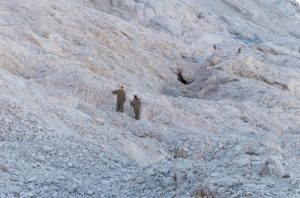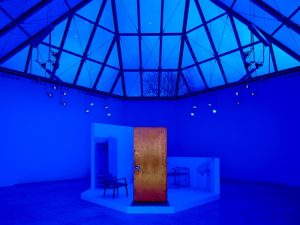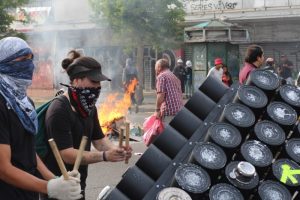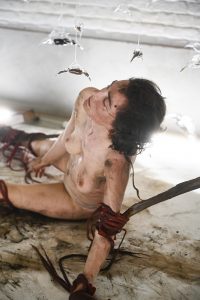Félix Blume is a sound artist and sound engineer. His sound pieces, videos, actions and installations make you see the fantastic in the mundane and the poetical in the every day. Over the course of his practice he has collaborated with children from Chile to record the singing of crickets at night, installed wooden doors in the middle of a Belgian forest so that residents of a Refugee Shelter could share their stories with the local population, he has used a tree to play music and collect the memories of a Mexican village, cooperated with the inhabitants of a little village in the Amazon to document their everyday sounds, he has built soundscapes together with blind people, created a bamboo-flutes orchestra played by the waves in Thailand, documented the tradition of funeral processions in Haiti, etc. Even stray dogs in Brazil have joined his sound explorations.

Félix Blume, Dream’s Cricket, In collaboration with children, Chile, 2019
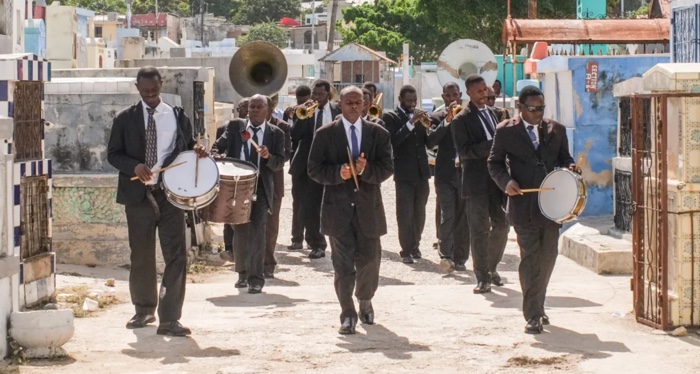
Félix Blume, Death in Haiti: Funeral Brass Band & Sounds of Port-au-Prince, Haiti, 2018
Félix Blume, Doors of Listening, Belgium, 2020
There are many reasons to admire Blume’s work but I’m going to select just three of them:
Reason Numero Uno: Blume also works as a sound engineer on other people’s documentaries and films. One of these people is my favourite artist in the whole universe.
Reason number two: he is one of those rare artists who can look back at his own practice with irony. In 2012, Blume realized that while hunting for sounds, he was also producing images that were sometimes be a bit ridiculous and often very poetic. So he planted a camera and did his job in front of it. Those sounds are called Wildtracks in English (Sons seuls in French.) While the point of view of the camera is static, the point of listening is moving, producing a disconnect that makes us smile but also makes us question what we hear.
Reason number three: his work is often enchanting. Take Swarm, for example. The sound installation is composed of 250 small speakers, each one reproducing the sound of an individual flying bee. The artist recorded the flying bees using a recording studio specifically designed for them. When you approach the installation, you can hear the sound of the whole swarm. By getting closer, however, you become part of the swarm. You are immersed in the buzzing sound but can detect the individual “voices” of the tiny insects. It’s uncanny and delightful.
Félix Blume, Son Seul / WildTrack #18
Félix Blume, Son Seul / Wildtrack #17
Félix Blume, Son Seul / Wild Track #1
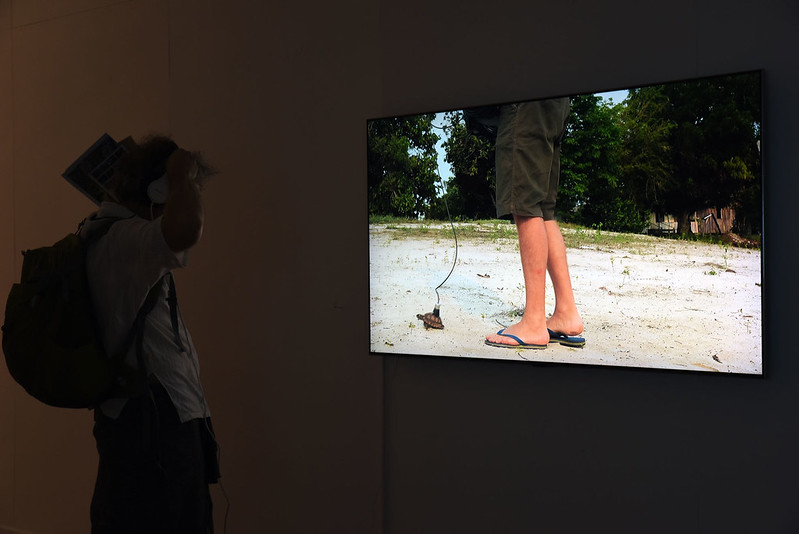
Félix Blume exhibition at the Musée des Tapisseries. Photo: Luce Moreau for GAMERZ Lab
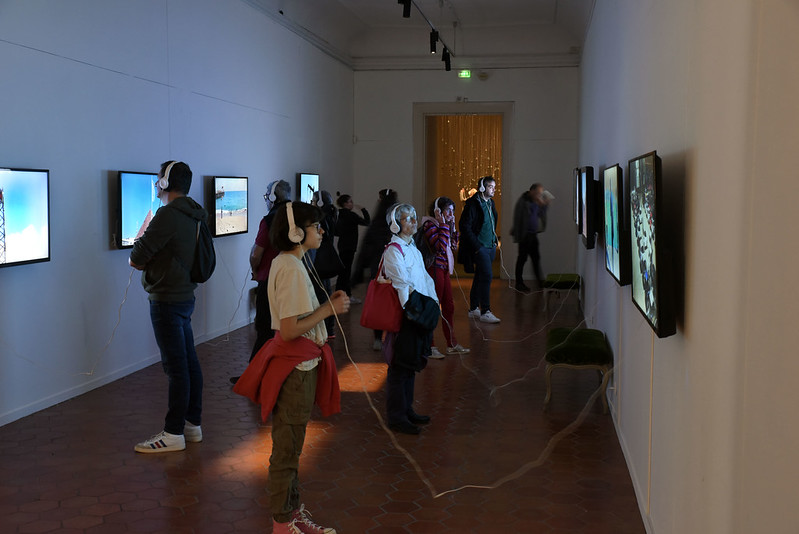
Félix Blume solo exhibition at the Musée des Tapisseries. Photo: Luce Moreau for GAMERZ Lab
Both Swarm and Wildtrack are currently on view at the Musée des Tapisseries in Aix-en-Provence. The solo show (produced by Lab GAMERZ) was my excuse to get in touch with Félix Blume and get him to talk about his work:
Hi Félix! How did the Wildtrack series start? How did you first notice the visual potential of the activity? Was it while looking at the work of other sound recorders and artists? Or is it because you noticed that people around you found the scenes curious?
Probably a bit of both. The whole project actually started in the Atacama Desert in the North of Chile where, unsurprisingly, there is very little sound material. It is the kind of place I like because it presents me with a challenge: finding sounds to record. One of the sounds I found was a Coca-Cola can that was rolling in the sand desert, pushed by the wind. I had to run after the can to be able to record its almost rhythmic sound as it was rolling on the ground.
Sergio, who was the cameraman working on the project, had the idea of planting the camera and filming the moment when I was chasing the can around. That first shot set the rules for the whole series: a fixed camera, a still frame, a wide shot and a sound focus on what the microphone captures. The discrepancy between the point of view and the point of listening is unmistakable. There is a lag between the place where the noise actually happens and the place from where you “see” it. That is not something you often experience in cinema or in audiovisual works in general where the aim is to have you hear what you see and have a complete coherence between listening and seeing. In my video, the fact that you see the microphone and the sound engineer makes you listen to what the microphone is recording and guides your ear towards a sound detail of this wide shot.
It is quite troubling to see and hear this object that symbolises modernity, globalisation and consumerism found itself in a landscape that looks pristine…
I wasn’t really thinking about that contrast when the idea for the video emerged. The project started very spontaneously but in this case, it is true that watching it makes emerge other ideas, new interpretations, possibilities, etc. The same happened at other moments over these 35 videos. Starting with this disparity between what you see and what you hear. The main idea was to bring the spotlight on some details. Like when you hear a moving fly, it is because you focus on the sound detail that that fly represents. In the Atacama Desert, that fly was the Coca-Cola can.

Félix Blume, Wildtrack during the Belluard Festival
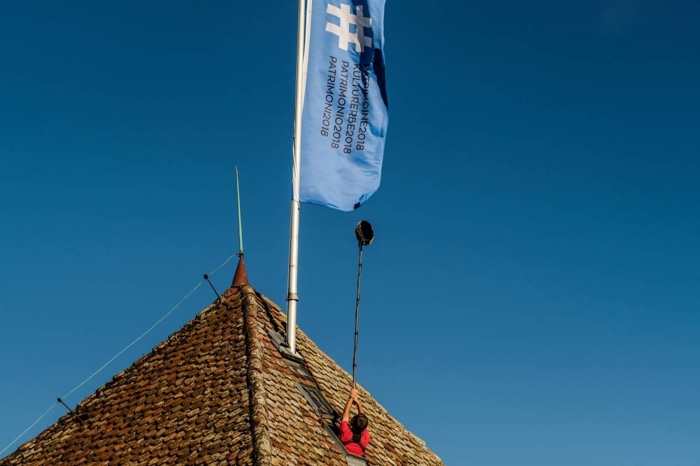
Félix Blume, Wildtrack during the Belluard Festival
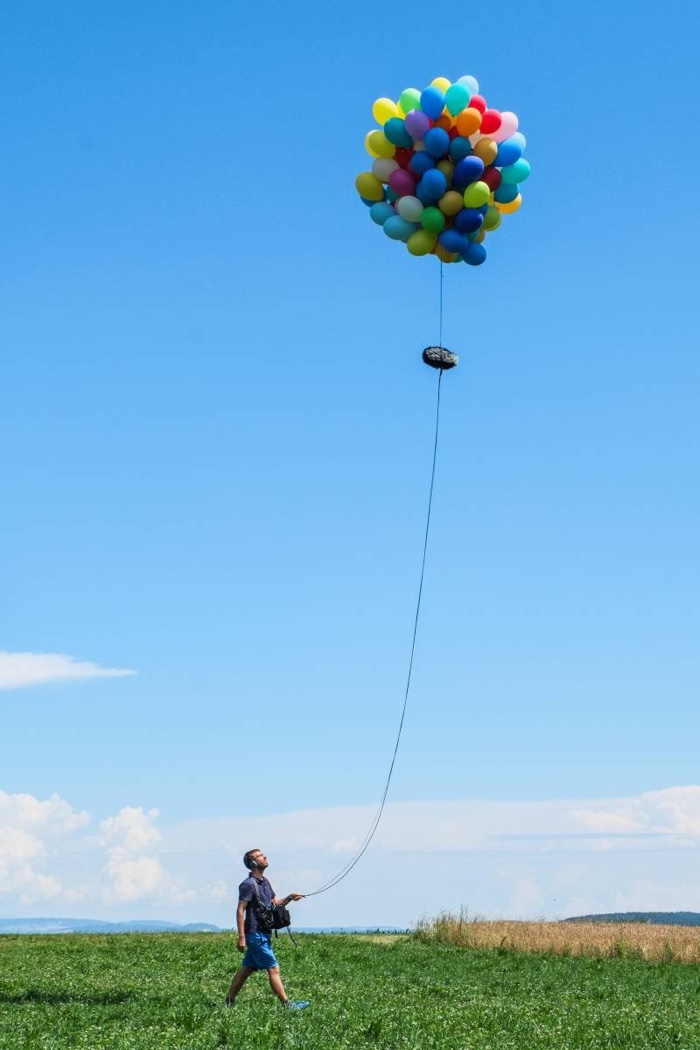
Félix Blume, Wildtrack during the Belluard Festival
How much preparation is there behind the Wildtrack videos? How much can you plan in advance? Do you get external help to film these moments?
This series has marked a pivotal moment for me. It was a pivot between my role as a sound recorder and my own personal work. I enjoyed blurring the borders between what an artist can be and what a technician can be. There is not necessarily such a big and defined frontier between the two.
That first video in the Atacama Desert and the ones that followed were done very spontaneously while working on other shoots. The film team often knew I had already done some of these videos. I always thought I’d do more videos in that series. Most of the time, it was spontaneous. I would be working on a film and finding 5 minutes to do the shot. Usually in one single take.
Later on, I started working more and more on my own projects and less as a sound recorder for others. And I proposed to develop further the series for the Belluard Bollwerk festival in Fribourg, Switzerland. My idea was to do one video per day in the area. The technique was completely different: I wasn’t carving up some time on a shoot anymore but I was scouting locations, doing several takes, shooting more videos than the ones we had initially planned, rehearsing some of the shots, etc. It was thus far less spontaneous.
Do you have a bucket list of Wildtracks? Sounds that you dream to isolate and record?
I have a bucket list of ideas of things to record, of places I’d like to visit, etc. But I realised that I actually do not stick to that list. Other ideas pop up, other projects emerge and surface. So there is a list but I hardly ever tick off any of its boxes. I like to be surprised.
Félix Blume, Essaim | Swarm, 2021
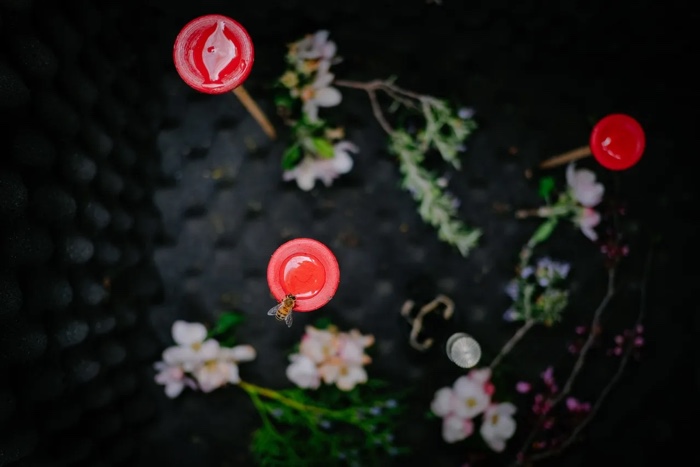
Félix Blume, Essaim | Swarm (Recording process and design of the recording studio), 2021
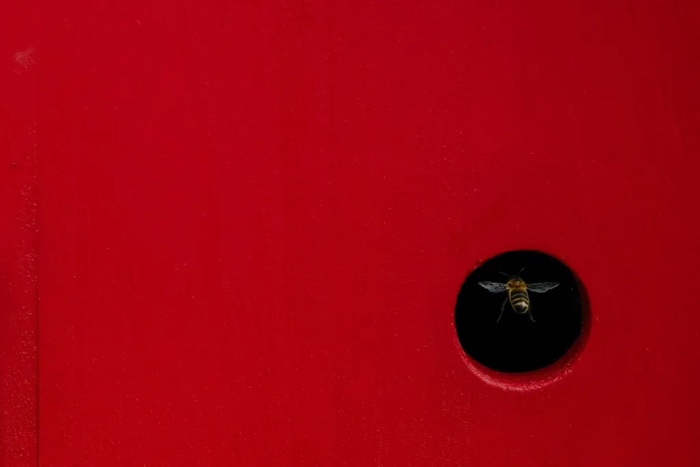
Félix Blume, Essaim | Swarm (Recording process and design of the recording studio), 2021
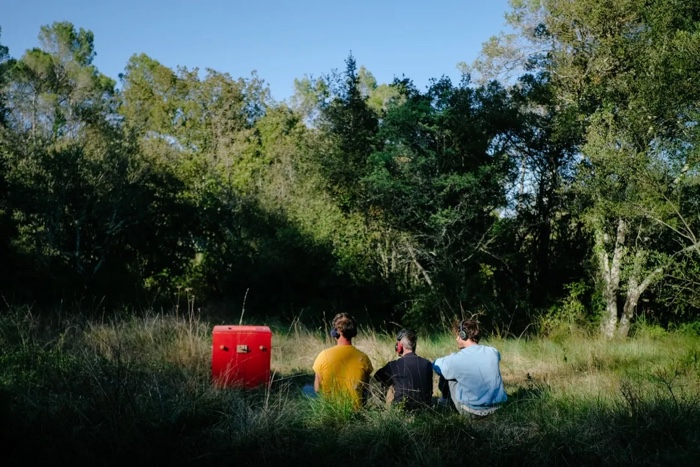
Félix Blume, Essaim | Swarm (Recording process and design of the recording studio), 2021
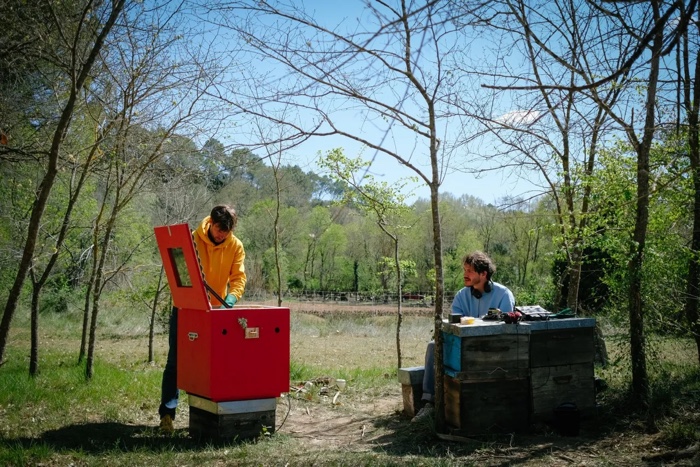
Félix Blume, Essaim | Swarm (Recording process and design of the recording studio), 2021
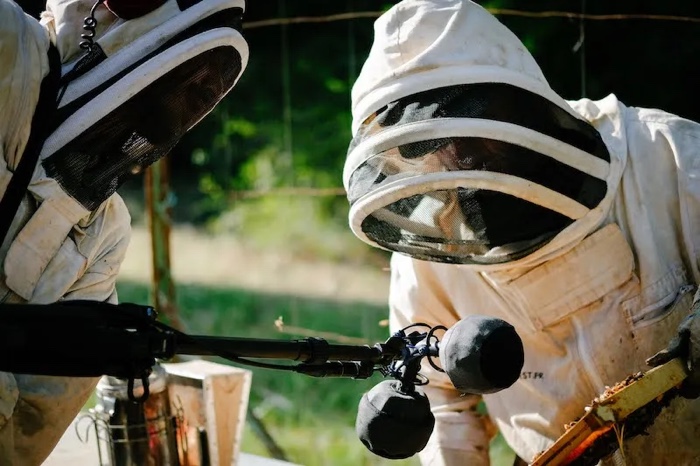
Félix Blume, Essaim | Swarm (Recording process and design of the recording studio), 2021
I’m also wondering about the work being the Swarm installation. It is made of 250 small speakers, each one reproducing the sound of a flying bee. How did you manage to record individual bees? It sounds like a technical nightmare…
When i first proposed the project to collaborators and to Constance from DDAContemporaryArt, the idea was fairly simple: we would record bees individually. It turned out to be more complicated than expected. We collaborated with the Lab GAMERZ in Aix-en-Provence and with the beekeeper Dominique Hardouin and started reflecting on the best way to record a single flying bee. We wanted to go as close as possible to a swarm of bees buzzing and moving around. In the end, we decided to focus on the bees, not when they are part of the swarm, but when they go from one flower to another. When they are prospecting, foraging and whizzing about from one place to another. Not when they are feeding, because then the bees are sucking the nectar and they don’t produce any sound.
We built a recording studio for bees to recreate this foraging experience. It was basically a wooden box, slightly bigger than a beehive, acoustically isolated to avoid resonance inside the box but also to shield it from any sound from the outside. We placed water and honey inside to attract the bees. The very sensitive microphone, located at the center of the box, recorded the flight and activities of each bee entering the mini-studio. We tested the prototype in the Var with the beekeeper. We provided several configurations. For example, the entrance and the exit of the bee: there were holes on the sides of the box but we could also open up the top part to allow the bee to exit after the recording. Over time, through trial and error, we figured out how much time we needed to record each individual bee. We recorded over 600 bees but we only kept 250 tracks. They were long enough, the sound was decent and they are now part of the installation.
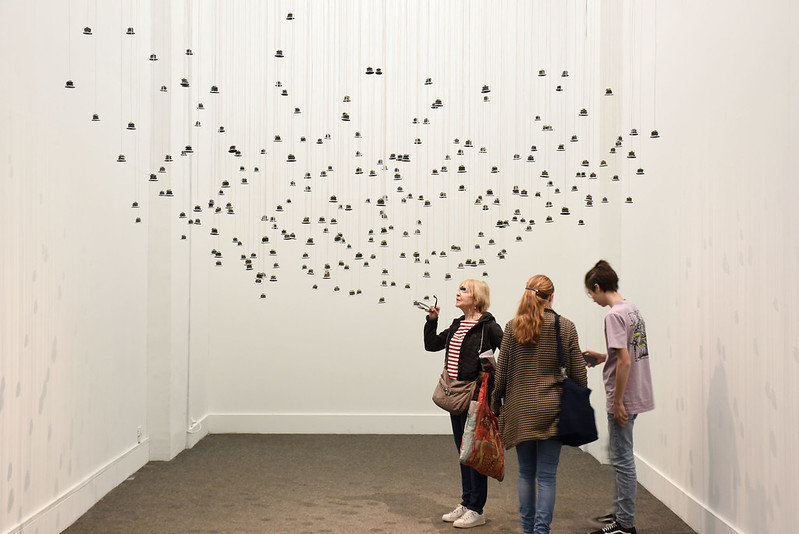
Félix Blume, Swarm at the Musée des Tapisseries. Photo: Luce Moreau for GAMERZ Lab
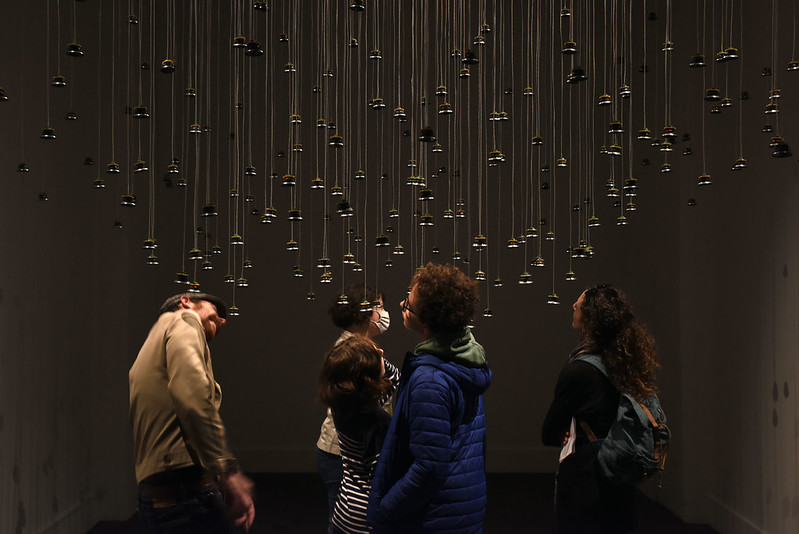
Félix Blume, Swarm at the Musée des Tapisseries. Photo: Luce Moreau for GAMERZ Lab
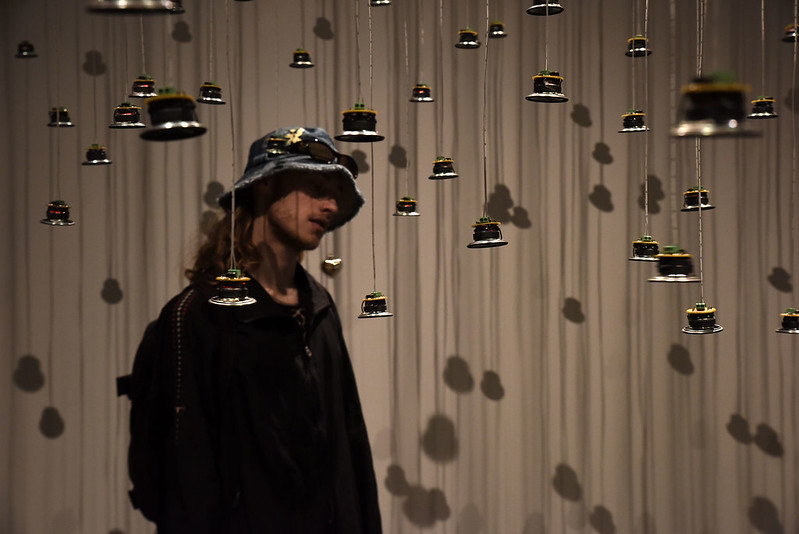
Félix Blume, Swarm at the Musée des Tapisseries. Photo: Luce Moreau for GAMERZ Lab
Are there other challenges you encountered while developing the work?
There were several steps in this project. The recording part was obviously the biggest challenge to overcome. The Lab GAMERZ and Grégoire Lauvin both helped me throughout the conception and construction phases. Once on-site, I was also supported by the beekeeper and by Arthur Thomas, an assistant who helped with all the individual recordings.
The other challenges included the installation itself: suspending 250 speakers. Even though they are quite small, it wasn’t easy to determine how they should occupy the space and facilitate this double act of listening: from a distance, when you first hear the ensemble of sounds and then when you realise you can enter the swarm and move from one bee to another. Until the very last moment, we kept wondering whether it was going to work as intended, how it would function in the space and with the public.
Swarm is visual spectacular. I thought there was a lot of poetry in leaving the sonic devices “bare”. You could have tried to hide the technology and made the whole installation look more “organic.” Why did you decide to leave the sonic devices unadorned?
I’d say that the sounds guided aesthetic decisions. For me, the speakers are there as sound transmitters, they are there to propose a listening experience. If we were to add any other elements for purely aesthetic reasons or for any reason that wouldn’t be purely acoustic, we would lose this direct access to the sound. Of course, the visual experience and the way the installation occupies the space are both important but the raison d’être of the piece is its sound.
I thought that it is in part what makes the strength of the piece, its sobriety allows the listener/spectator to let their imagination take over.
Yes, the fact the focus is on the sound means that you can close your eyes and imagine being somewhere else, in the presence of bees, etc. The less visually explicit we make it, the easier it is to let your imagination run. We wanted to propose not to impose listening experiences that will differ from one person to the other.
Your work involves a lot of travel and collaborations. I suspect the pandemic must have been a professional challenge but I was wondering how sound helped you during times of lockdown and cancelled events? So many people talked about the silence of the cities or the birds that you could suddenly listen to.
I haven’t been in urban environments for long periods since the beginning of the pandemic. Cities were the places where these sound changes were the most palpable.
Some of the professional projects have been cancelled or postponed. I still traveled but far less than before. The first project I actually made when the pandemic started was in a village in Mexico. I spent 4 months there. It was another temporality. I’m not used to spending that much time in one place but it was extremely pleasant. After that, the rhythm of my life slowed down a bit but, again, that was rather enjoyable. I didn’t really suffer from all the cancelled projects because I realised it gave me more time to focus on other projects. Later on, when lockdowns eased and museums reopened, there was a post-pandemic avalanche when many projects that had been postponed finally happened. Sometimes at the same time. An abrupt contrast with the slow rhythms and the suspended time that we got used to.
Félix Blume, Rumors from the sea, Thailand Biennale, 2018
You’re now in a residency in Mexico. What are you doing there and are there upcoming events, field of research or work coming up for you?
As often, I’m working on several projects simultaneously.
At the moment I am indeed doing a residency for 6 weeks at Casa Wabi on the Pacific Coast of the Oaxaca State. I am building some kind of ocarinas in terracotta. In a nod to the traditional terracotta oven and pottery work produced in the region. I would like to use these ocarinas in the laguna and let the energy of the waves play the instruments.
I did a similar project in Thailand where I was using the energy of the waves to play bamboo flutes. Just like I used a local material (bamboo) in Thailand, it was logical for me to draw on the material culture of the region here. The installation in Mexico will probably be ephemeral. Children will build the ocarinas with me and use them to enter into a dialogue with the laguna.
Next month, I’ll be working on a project in the Arizona Desert. At the border with Mexico, you can still find old windmills that were used to pump the water necessary to raise cattle. Most of them have been abandoned, others have been replaced by solar panels. I would like to repurpose these old windmills to generate sound. Their mechanism produces a forward and backward movement of the central mast that was used to operate the pump. My idea is to use that mast as a kind of bow that will stroke the rope of a bass made of discarded material found in the desert or in the car scrapyards in the area. Some of these windmills will then turn into performers that play these basses in the desert, a place where a priori no one is there to listen to their music. In reality, thousands of migrants from Mexico or Central America pass through this desert on their way to a better life in the United States. These windmills built at the time of the Conquest of the American West would then produce a sound that accompany other migrants following their dream but in the opposite direction.
Then in May, i will start a 3-month residency in Sao Paulo at Pivô. I’m planning to create a new project in collaboration with the Haitian community living in the city.
Thanks Félix!
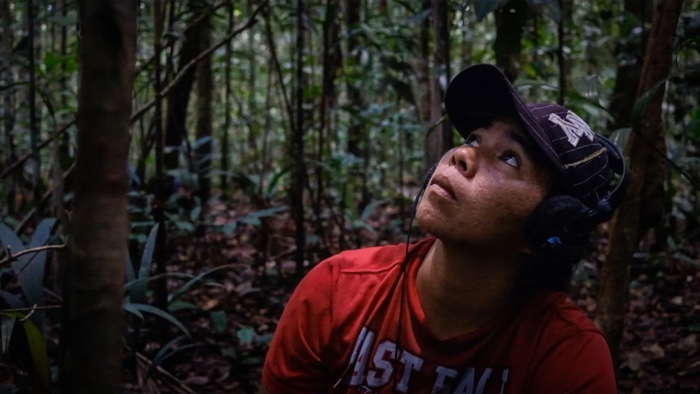
Félix Blume, Curupira, creature of the woods
Félix Blume’s solo show runs until 15 May 2022 at the Musée des Tapisseries in Aix-en-Provence, France. There will be a videoconference with Félix Blume and a screening of his film CURUPIRA, BÊTE DES BOIS on Wednesday 30 March at École Supérieure d’Art d’Aix-en-Provence Félix Ciccolini.
Producers of the exhibition: M2F Créations | Lab GAMERZ in association with the Musée des Tapisseries.
Previously: Métaboles. On the need to decolonize nature.

